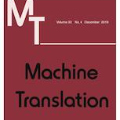Past vocabulary learning techniques identify relevant vocabulary before training, relying on statistical and entropy-based assumptions that largely neglect the role of model training. Empirically, we observe that trained translation models are induced to use a byte-pair encoding (BPE) vocabulary subset distinct from the original BPE vocabulary, leading to performance improvements when retrained with the induced vocabulary. In this paper, we analyze this discrepancy in neural machine translation by examining vocabulary and entropy shifts during self-training--where each iteration generates a labeled dataset by pairing source sentences with the model's predictions to define a new vocabulary. Building on these insights, we propose self-vocabularizing training, an iterative method that self-selects a smaller, more optimal vocabulary, yielding up to a 1.49 BLEU improvement. Moreover, we find that deeper model architectures lead to both an increase in unique token usage and a 6-8% reduction in vocabulary size.
翻译:暂无翻译




